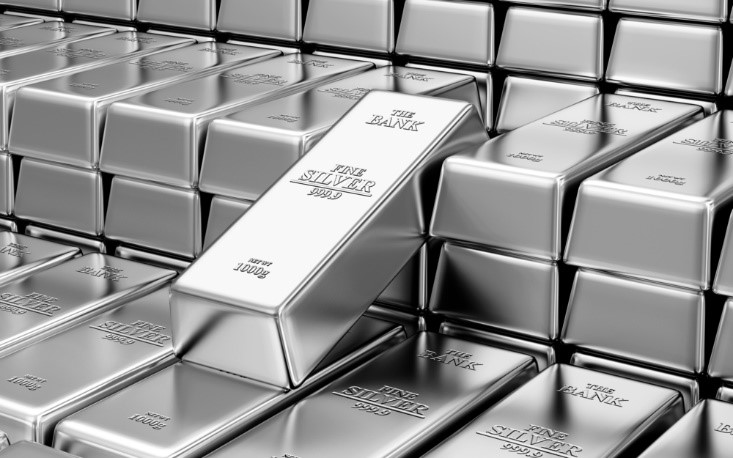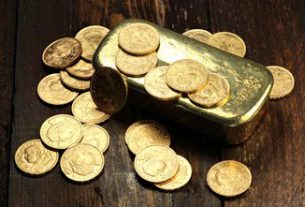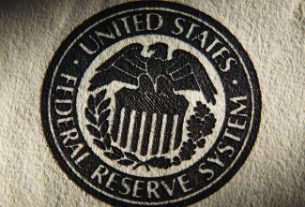Silver has long played second fiddle to gold. Winners win a gold medal; runners-up get silver. Gold jewelry doesn’t tarnish; silver does. And gold is worth over $1,400 per ounce while silver just pushed above $15 an ounce again. But despite gold’s clear lead over silver, silver is becoming increasingly popular with investors. And one of the more popular ways to invest in silver is through a silver IRA.
A silver IRA works just the same as a traditional IRA, allowing investors to invest pre-tax dollars in silver while deferring taxation until it comes time to take a distribution. And with a silver IRA rollover you can roll over existing retirement assets from 401(k), IRA, TSP, or similar accounts tax-free.
Investors are at a crossroads right now, with stock markets plateauing and set for a major correction. What investors do today will determine how financially secure they’ll be for years to come. With silver poised for another dramatic rise in value, investing in a silver IRA may be just the thing investors need to safeguard their retirement savings.
How to Invest Your IRA in Silver
A silver IRA is a type of self-directed IRA in which you, the investor, are the fiduciary. You decide what kind of silver coins or bullion to invest in, you determine where you want to buy that silver, and you determine which custodian stores that silver for you.
A silver IRA is subject to the same rules as a traditional IRA. Your silver IRA investment is made with pre-tax dollars and your investment grows tax-free until you decide to take a distribution. Taking a distribution before age 59 ½ incurs a 10% penalty in addition to any taxes you owe, and once you reach age 70 ½ you’ll be required to take required minimum distributions (RMDs) each year. You can choose to take your distributions in cash or in silver.
Investing in silver through a silver IRA is a solid method of diversifying your investment portfolio. Precious metals have long been trusted by investors to protect their wealth because they maintain their value in the face of inflation and financial distress. And with growing industrial demand for silver providing an additional impetus for price growth, the upside for silver is substantial.
Defining a Silver IRA Account
Most people understand how to open a regular IRA account. They go to a brokerage and open an account, and they’re able to invest in stocks, bonds, mutual funds, and all sorts of paper assets. But because a silver IRA invests in tangible physical assets, setting up a self-directed IRA to invest in silver requires the investor to pick a custodian to store that silver. Storage of silver by yourself is not allowed with a silver IRA, nor are you allowed to purchase silver coins or bullion that you already own.
The process of opening a self-directed IRA to invest in silver isn’t terribly difficult, and the experts at Goldco can guide you through the process. Once your silver IRA is up and running, you’ll be able to manage your investment assets, making the decisions about what to buy and when. And with the same tax advantages as a traditional IRA, you can let your silver keep gaining in value tax-free until you decide to take a distribution.
Benefits of a Silver IRA Include Those of a Traditional IRA
While most silver IRAs are set up just like traditional IRAs, and enjoy the same tax advantages such as being able to invest with pre-tax dollars, it’s also possible for investors to set up a Roth silver IRA. Just like a traditional Roth IRA, a silver Roth IRA allows investors to use post-tax dollars to invest in silver, with distributions then being tax-free. That benefits those investors who expect to end up in a higher tax bracket in retirement than the one they currently are in.
Remember that the total annual contribution limit for IRAs is $6,000, or $7,000 for those age 50 or over. That is the total for all IRAs, so if you have more than one account you can only invest $6,000 (or $7,000) across all those accounts. There is an exception, however, for IRA rollovers.
If you have money in an existing 401(k), 403(b), TSP, or similar account that you want to invest in a silver IRA, you can roll over the entire sum of that account without having to worry about falling afoul of IRS regulation. That allows you to take money from underperforming retirement accounts and put them to better use by investing in silver.
Advantages of a Silver IRA
Silver, like gold, is used by many investors as a safeguard against inflation and economic turmoil. Like gold, silver tends to gain in value as the economy begins to perform poorly. And it acts as a hedge against inflation, just like gold. Just look at silver dollars, which up until 50 years ago or so contained a dollar worth of silver. Now the silver value is nearly $12, and the coins themselves often sell for $20-30 or more.
Silver also trades in relationship to gold, with many investors looking at the silver to gold ratio to determine each metal’s relative affordability. In recent years that ratio has often been around 40 or 50 to 1, meaning that it takes 40 or 50 ounces of silver to equal the price of an ounce of gold. Now that ratio is over 90, meaning that you can get over 90 ounces of silver for the same price as an ounce of gold. Since many investors expect silver to revert in the future to its average around 40 or 50 to 1, investing in silver now while it’s undervalued against gold is a great way to take advantage of silver’s future price movements. The relationship between gold and silver prices is an important factor to keep in mind when investing in a gold and silver IRA.
Traditional IRAs have always invested in paper assets such as stocks, bonds, mutual funds, and CDs. Those assets fluctuate in value based upon the health of Wall Street, the strength of the dollar, and the monetary actions of the Federal Reserve.
Silver isn’t subject to the same types of risks because it is much less volatile than those paper assets. And in the face of a currency losing its value and purchasing power, silver actually increases in value, helping investors to maintain their wealth.
Not every type of silver is available for silver IRA investment, however. Silver jewelry cannot be purchased or held by an IRA, nor can older silver coins that once circulated in commerce. But current US Mint Silver Eagle coins, as well as coins from other world mints such as the Austrian Philharmonic, Canadian Silver Maple Leaf, and Chinese Silver Panda, are IRA eligible forms of silver. You can also choose to invest in silver rounds, silver bars, and other silver bullion as long as it is at least 99.9% pure. With dozens of government and private mints and assayers producing bullion of that purity, you have the choice of hundreds of different types of silver in which to invest.
By investing in a silver IRA, investors have the ability to diversify their portfolios and safeguard their assets against inflation, currency devaluation, and recession. With world trade slowing, stock markets remaining largely stagnant, and all indicators pointing to increased uncertainty in the economy, investors have to make the decision right now how they’re going to protect their assets.
Too many investors didn’t see the writing on the wall in 2008 and they suffered massive losses as a result. While stock markets lost over 50% of their value, some investors suffered 70% and even 80% losses. Many made the unfortunate mistake of selling their assets at the bottom of the market and keeping their money in cash. Had they invested in silver instead, they would have seen their money triple between 2009 and 2011.
If you’re looking to diversify your investment portfolio ahead of a stock market crash and protect your wealth by investing in silver, contact the experts at Goldco today. Their years of experience in helping investors just like you will give you the edge you need to stay ahead of the curve and keep your retirement savings secure no matter what happens in the economy over the next few years.
This article was originally posted on Goldco.





